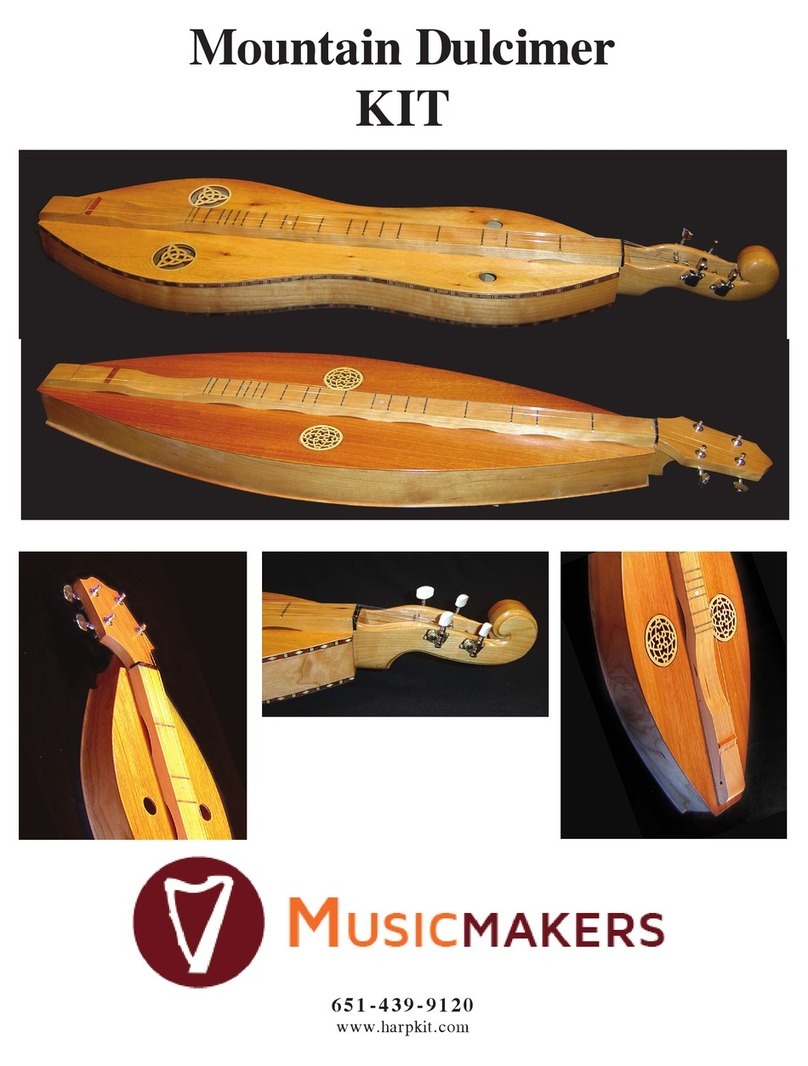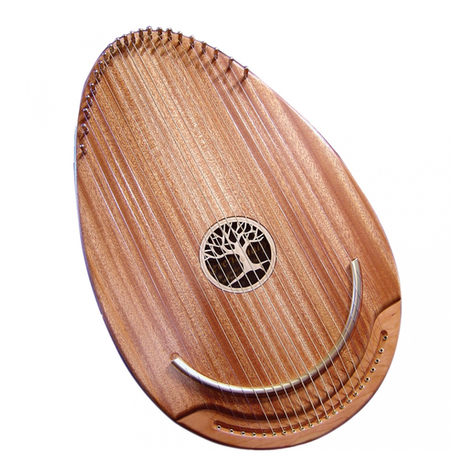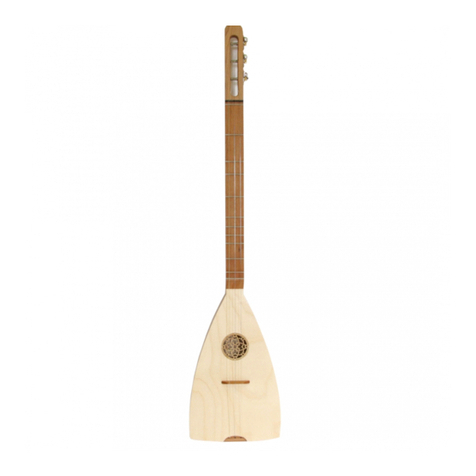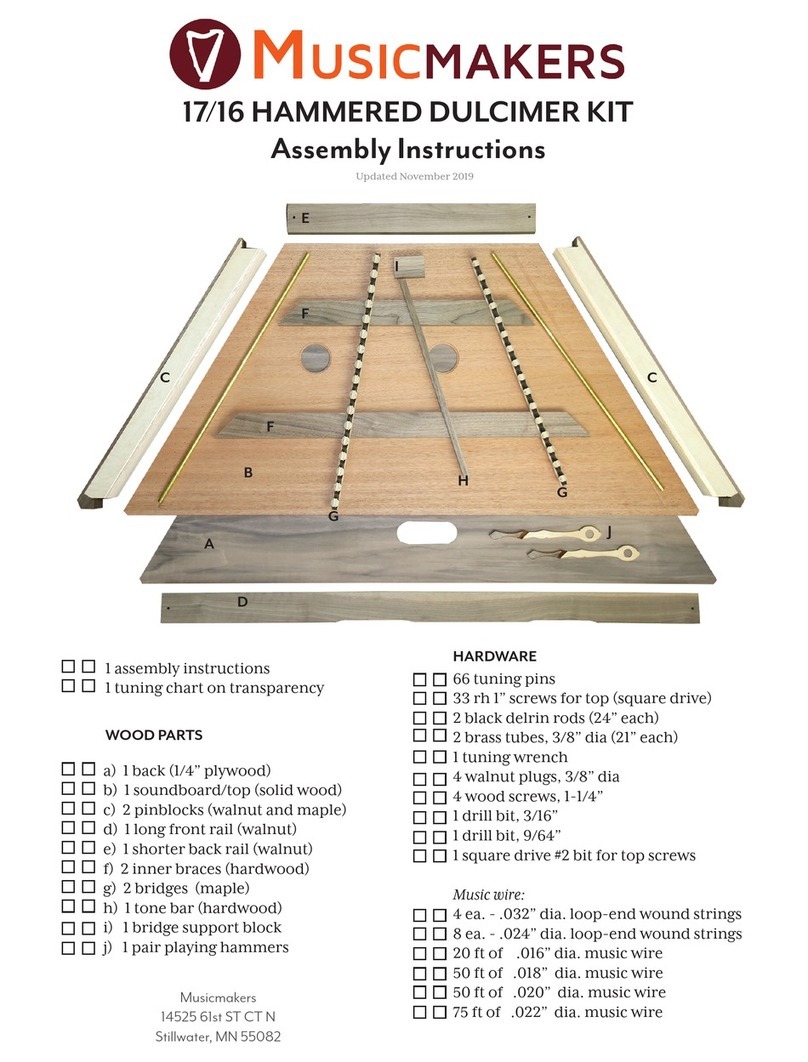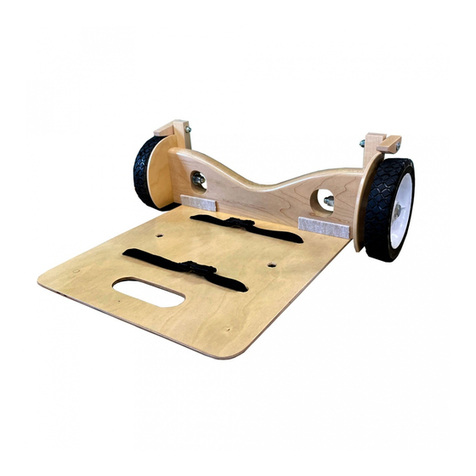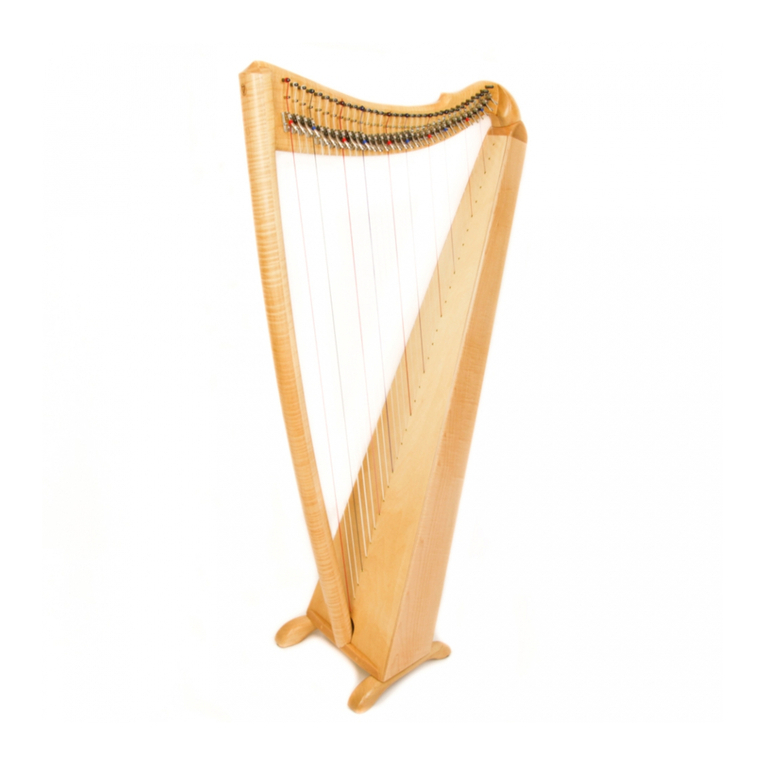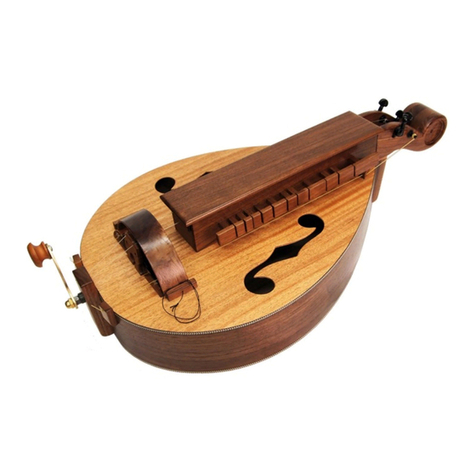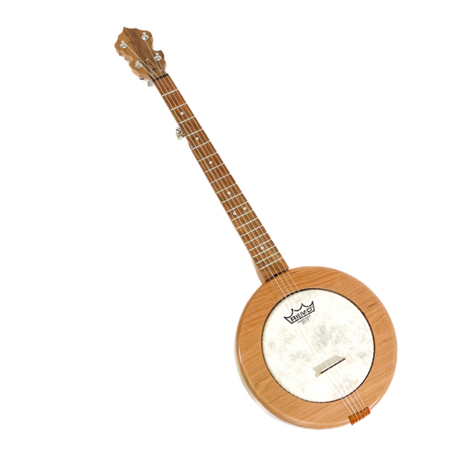
8.
PREPARING THE FRONT (SOUNDBOARD)
Tools Required for This Stage
Pencil Spring Clamps
Wood Glue Chisel or Razor Knife
Damp Rag MaskingTape
Sandpaper (60-80 grit)
_____17. (OPTIONAL)
If you purchased
a decorative rosette for the sound hole, you’ll
need to glue a “donut ring” (fig 17a) inside the
sound hole now to provide a ledge for gluing the
rosette in place. It is easiest to see the correct
position of the donut ring if you look from the
outer face of the sound board (fig 17b). Glue
this ring to the inside of the soundboard now,
before installing the braces.
fig 17a fig 17b
fig 19
_____15. We highly recommend making
yourself a clamping pad for the body of the
instrument out of 3/4 plywood or particle
board (fig 15). Cut it at least the size of the
soundboard, or a little larger. fig 15
Clamping Pad
3/4” thick
_____16. The inside face has pencil marks showing the placement of the braces.
Place it on your work table with the inside facing up.
Center the frame of the instrument on the soundboard and outline the interior in
pencil (fig 16), just as you did for the back panel. Make certain the frame is cen-
tered in relation to the sound hole and the tail end. Slide the frame up toward
the top of the panel to make sure there will be room for the top brace and
the “donut” for the rosette.
Notice the Center Lines!
fig 16
Pencil
Outline
_____18. Find the two braces that are notched to fit
together forming an “X” (figs. 18a & 18b). These can
be joined two different ways, and we want the longer
legs to be spread as wide as they can go (fig 18a).
This will give you the maximum bracing strength on
the soundboard. Test fit the X to the soundboard, just
to be sure you have it correct.
fig 18a
THIS
fig 18b
NOT THIS
_____19. Position the X braces in place first, without glue,
and then arrange the three shorter ones as shown in fig. 19.
Trim the ends that are too long, just as you did for the back
panel.
When satisfied with the fit, glue and clamp the X braces in
place first, making sure to put glue in the joint where they
cross. Use clamps and/or weights to hold the X braces in
place firmly.
When the X braces are dry, go ahead and glue the other
small braces too, as shown in fig 19. fig 20a
IMPORTANT NOTE ABOUT SOUNDBOARD
The front panel (soundboard) is the lighter colored piece made of solid Sitka Spruce,
and has a sound hole cut through it. If this panel has been exposed to high humidity
for more than a few hours, you will need to dry it out in an air-conditioned (de-
humidified) room for a few days to shrink the grain. This will help prevent cracks
from developing in the future. Hint: Another easy way to dry it out is to place it in
the oven at low heat (200 degrees) for 6-8 hours. Put clean tin foil under it to protect it
from any grease on the rack.

